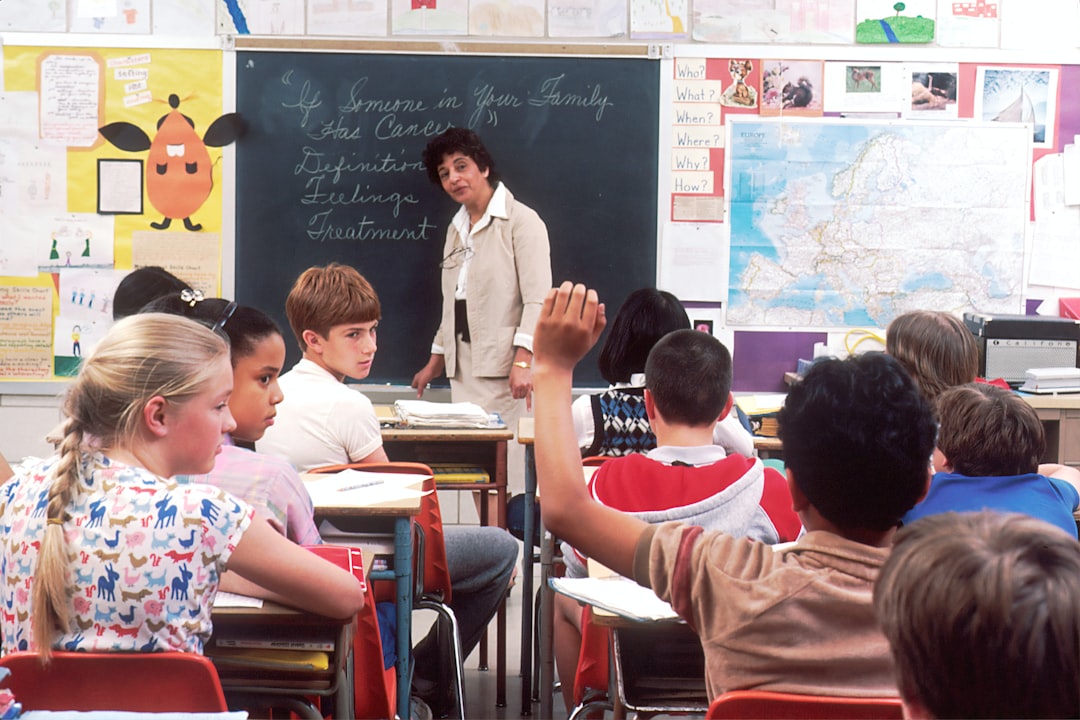Support our educational content for free when you buy through links on our site. Learn more
10 Engaging Instructional Strategies That Will Transform Your Classroom [2024] ✅
Have you ever wondered what makes a great teacher? Is it their ability to captivate students with their storytelling skills? Or is it their knack for simplifying complex concepts? While these qualities certainly contribute to effective teaching, there’s another crucial element that sets exceptional educators apart: instructional strategies. These strategies are the secret sauce that can transform your classroom into a vibrant hub of learning and engagement. In this article, we’ll explore 10 instructional strategies that will help you become a master of your craft. So, let’s dive in and discover the key to unlocking your students’ full potential!
Table of Contents
- Quick Answer
- Quick Tips and Facts
- Background: The Power of Instructional Strategies
- Instructional Strategies: Unleashing the Magic in Your Classroom
- 1. The Power of Storytelling
- 2. Gamification: Learning Through Play
- 3. Differentiated Instruction: Meeting Every Student’s Needs
- 4. Project-Based Learning: Real-World Applications
- 5. Cooperative Learning: Strength in Numbers
- 6. Flipped Classroom: Empowering Students
- 7. Inquiry-Based Learning: Curiosity Unleashed
- 8. Technology Integration: Enhancing Engagement
- 9. Metacognition: Thinking About Thinking
- 10. Formative Assessment: Feedback for Growth
- FAQ
- Conclusion
- Recommended Links
- Reference Links
Quick Answer
Instructional strategies are powerful tools that educators use to engage students and enhance learning. By employing a variety of techniques, such as storytelling, gamification, and project-based learning, teachers can create an environment that fosters curiosity, critical thinking, and collaboration. These strategies cater to different learning styles and help students develop essential skills for success in the 21st century. So, let’s explore the top 10 instructional strategies that will revolutionize your classroom!
👉 CHECK PRICE on: Amazon | Walmart | Etsy
Quick Tips and Facts
- Instructional strategies are techniques used by teachers to engage students and enhance learning.
- These strategies cater to different learning styles and help students develop essential skills.
- Effective instructional strategies create a student-centered learning environment.
- They promote active participation, critical thinking, and collaboration.
- Instructional strategies can be adapted to various subjects and grade levels.
Background: The Power of Instructional Strategies

Imagine a classroom where students are actively engaged, eagerly participating in discussions, and taking ownership of their learning. This is the power of instructional strategies. These techniques provide a framework for teachers to create a dynamic and interactive learning environment. By employing a variety of strategies, educators can cater to different learning styles, tap into students’ interests, and foster a love for learning.
Instructional strategies go beyond traditional teaching methods. They empower students to become independent thinkers, problem solvers, and lifelong learners. These strategies encourage active participation, critical thinking, and collaboration, preparing students for success in the 21st century.
Instructional Strategies: Unleashing the Magic in Your Classroom
1. The Power of Storytelling
✅
“Once upon a time…” These magical words have captivated audiences for centuries. Storytelling is a powerful instructional strategy that transcends age and subject matter. By weaving narratives into your lessons, you can spark students’ imagination, make abstract concepts relatable, and create memorable learning experiences. Whether it’s a historical event, a scientific phenomenon, or a literary masterpiece, storytelling brings learning to life.
2. Gamification: Learning Through Play
✅
Who said learning can’t be fun? Gamification is an instructional strategy that leverages the power of games to engage students and enhance learning. By incorporating elements such as challenges, rewards, and friendly competition, teachers can transform mundane tasks into exciting adventures. Whether it’s a digital game, a board game, or a classroom activity, gamification motivates students, fosters problem-solving skills, and promotes a growth mindset.
3. Differentiated Instruction: Meeting Every Student’s Needs
✅
No two students are alike. Differentiated instruction is an instructional strategy that recognizes and accommodates the diverse needs, interests, and learning styles of students. By tailoring instruction to individual students, teachers can create a personalized learning experience that maximizes engagement and achievement. Whether it’s through flexible grouping, varied assignments, or alternative assessments, differentiated instruction ensures that every student has the opportunity to succeed.
4. Project-Based Learning: Real-World Applications
✅
“Tell me, and I forget. Show me, and I remember. Involve me, and I understand.” Project-based learning is an instructional strategy that immerses students in real-world, hands-on experiences. By tackling authentic problems, conducting research, and collaborating with peers, students develop critical thinking, problem-solving, and communication skills. Project-based learning empowers students to take ownership of their learning and prepares them for the challenges of the future.
5. Cooperative Learning: Strength in Numbers
✅
“Alone we can do so little; together we can do so much.” Cooperative learning is an instructional strategy that promotes collaboration and teamwork. By working in groups, students learn from and with each other, developing social skills, empathy, and a sense of community. Cooperative learning activities, such as group projects, discussions, and peer tutoring, foster a supportive learning environment where students can thrive.
6. Flipped Classroom: Empowering Students
✅
Flipping the script on traditional teaching, the flipped classroom is an instructional strategy that puts students in the driver’s seat of their learning. In a flipped classroom, students engage with instructional content outside of class, through videos, readings, or online modules. Class time is then dedicated to hands-on activities, discussions, and personalized support. This approach allows students to learn at their own pace, explore their interests, and take ownership of their learning journey.
7. Inquiry-Based Learning: Curiosity Unleashed
✅
“Curiosity is the wick in the candle of learning.” Inquiry-based learning is an instructional strategy that sparks students’ curiosity and empowers them to ask questions, investigate, and discover knowledge. By posing open-ended questions, providing resources, and guiding students through the inquiry process, teachers foster critical thinking, problem-solving, and a love for learning. Inquiry-based learning encourages students to become active seekers of knowledge, rather than passive recipients.
8. Technology Integration: Enhancing Engagement
✅
In today’s digital age, technology is an integral part of students’ lives. Integrating technology into instruction is an instructional strategy that enhances engagement, promotes digital literacy, and prepares students for the future. Whether it’s using educational apps, online simulations, or collaborative tools, technology integration provides new avenues for learning, creativity, and communication. By harnessing the power of technology, teachers can create dynamic and interactive learning experiences.
9. Metacognition: Thinking About Thinking
✅
“Know thyself.” Metacognition is an instructional strategy that focuses on developing students’ awareness of their own thinking processes. By teaching students to reflect on their learning, set goals, and monitor their progress, teachers empower them to become self-regulated learners. Metacognition enhances critical thinking, problem-solving, and decision-making skills. By understanding how they learn best, students can become more effective and efficient learners.
10. Formative Assessment: Feedback for Growth
✅
Assessment is not just about grades; it’s about growth. Formative assessment is an instructional strategy that provides ongoing feedback to students, guiding their learning and informing instruction. By using a variety of assessment tools, such as quizzes, exit tickets, and observations, teachers can gauge students’ understanding, identify misconceptions, and tailor instruction to meet their needs. Formative assessment promotes a growth mindset, fosters self-reflection, and encourages continuous improvement.
FAQ

What are the 6 instructional strategies?
There are actually 10 instructional strategies covered in this article. They are:
- The Power of Storytelling
- Gamification: Learning Through Play
- Differentiated Instruction: Meeting Every Student’s Needs
- Project-Based Learning: Real-World Applications
- Cooperative Learning: Strength in Numbers
- Flipped Classroom: Empowering Students
- Inquiry-Based Learning: Curiosity Unleashed
- Technology Integration: Enhancing Engagement
- Metacognition: Thinking About Thinking
- Formative Assessment: Feedback for Growth
Read more about “What are Instructional Methods of Teaching? … ✅”
What are examples of instructional strategies in the classroom?
Some examples of instructional strategies in the classroom include:
- Storytelling to make concepts relatable and memorable.
- Gamification to engage students through game-like elements.
- Differentiated instruction to meet the diverse needs of students.
- Project-based learning to provide real-world applications.
- Cooperative learning to promote collaboration and teamwork.
- Flipped classroom to empower students and personalize learning.
- Inquiry-based learning to spark curiosity and encourage investigation.
- Technology integration to enhance engagement and digital literacy.
- Metacognition to develop students’ awareness of their own thinking.
- Formative assessment to provide feedback for growth.
Read more about “What are the 4 Key Instructional Skills? … ✅”
What are the 4 instructional methods?
The 4 instructional methods are covered in the 10 instructional strategies mentioned in this article. They are:
- Direct Instruction
- Inquiry-Based Learning
- Cooperative Learning
- Experiential Learning
Read more about “What Are the Four Teaching Strategies? …”
What are the 4 A’s strategies in teaching?
The 4 A’s strategies in teaching are:
- Activate: Engage students’ prior knowledge and activate their curiosity.
- Acquire: Introduce new information or skills through direct instruction or guided practice.
- Apply: Provide opportunities for students to apply what they have learned through activities or projects.
- Assess: Evaluate students’ understanding and provide feedback for growth.
Read more about “Teacher Strategies: Unlocking Success in the Classroom … ✅”
Conclusion

Incorporating instructional strategies into your teaching toolkit can transform your classroom into a vibrant hub of learning and engagement. By leveraging the power of storytelling, gamification, differentiated instruction, project-based learning, cooperative learning, flipped classrooms, inquiry-based learning, technology integration, metacognition, and formative assessment, you can create an environment that fosters curiosity, critical thinking, and collaboration. So, go ahead and unleash the magic of instructional strategies in your classroom!
Remember, the key to becoming an exceptional educator lies in continuously exploring and refining your instructional practices. By staying curious, embracing new ideas, and adapting strategies to meet the needs of your students, you’ll be well on your way to creating a transformative learning experience.
Recommended Links
- Instructional Coaching
- Lesson Planning
- Classroom Management
- Instructional Strategies
- Differentiated Instruction
- What are Instructional Methods of Teaching? 2024 ✅
